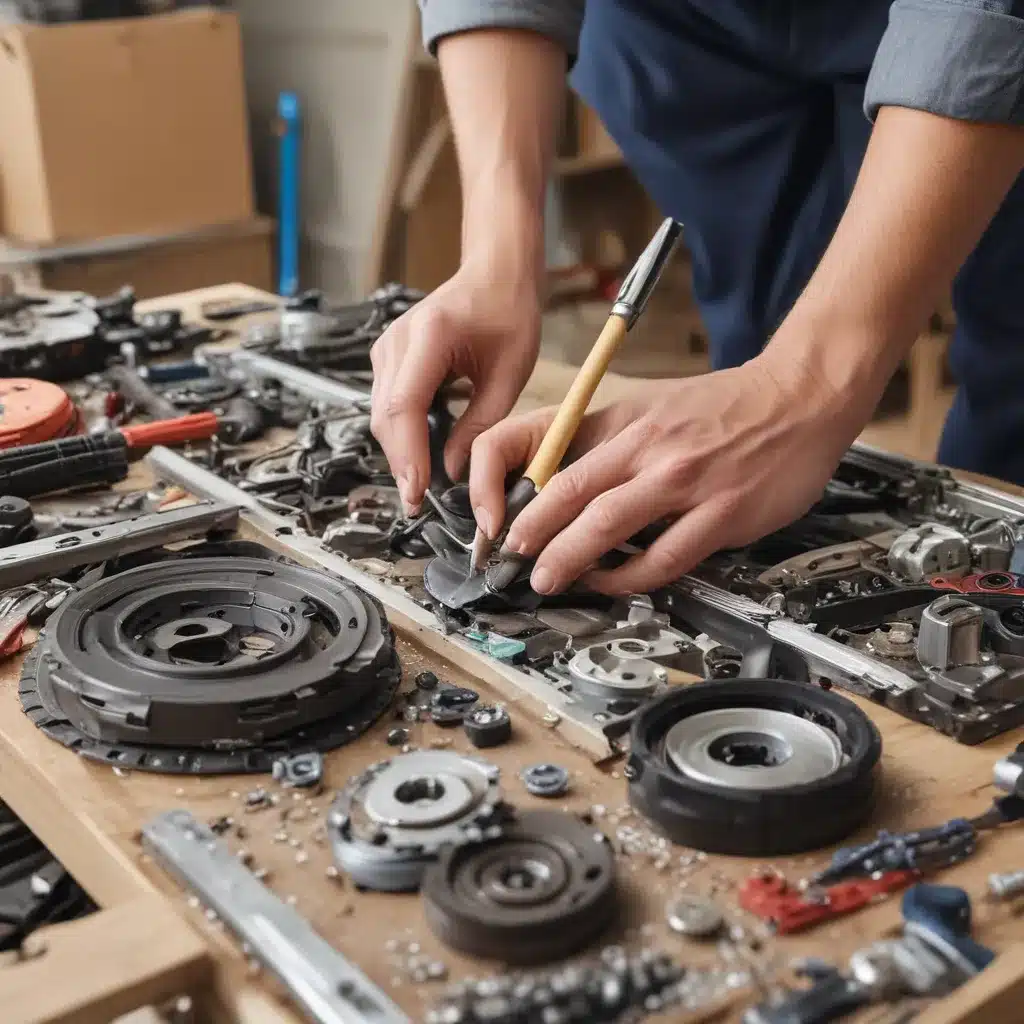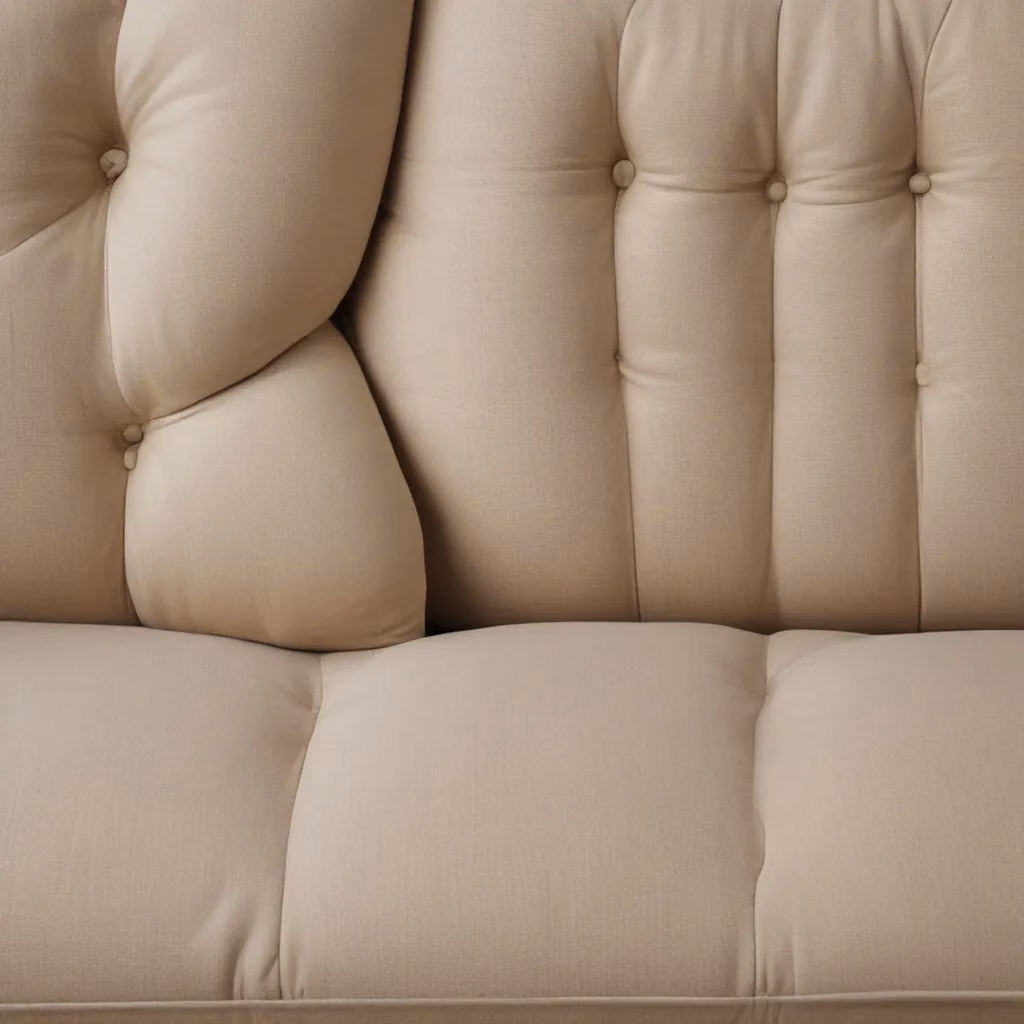The Great Couch Conundrum
You know that sinking feeling when your trusty old couch starts to show its age? The once-plump cushions have flattened, the fabric has faded, and the frame creaks with every sit. It’s a dilemma as old as time – do you invest in repairing the beloved piece, or take the leap and replace it with something fresh and new?
As the owner of Sofa Spectacular, a custom sofa company in the UK, I’ve seen this debate play out countless times. Customers come to me torn between the sentimental value of their cherished couch and the allure of a modern upgrade. It’s a tough call, and one that doesn’t have a one-size-fits-all answer.
When Repair Makes Sense
Let’s start by looking at the repair option. On the surface, it might seem like the more economical choice – after all, a quick reupholstery or a little TLC from an expert can breathe new life into an old favorite. And that’s often true, especially if your couch is still in decent structural shape.
Take my friend Sarah, for example. She’s had the same Chesterfield sofa for over 15 years, and it’s been a trusty companion through countless movie marathons and family gatherings. Recently, the leather started to crack and the cushions were looking a little worse for wear. Rather than tossing it, she decided to invest in a professional reupholstery job.
“I just couldn’t bear to part with that couch,” Sarah told me. “It has so many memories attached to it, and frankly, I couldn’t find anything in the stores that captured the same classic vibe.” The reupholstery set her back about £500, but she figures she’ll get at least another decade of use out of it. Not bad, considering a brand-new Chesterfield can cost upwards of £2,000.
The key is being proactive and addressing issues before they become major problems. Regular maintenance and quick fixes can go a long way in extending the life of your couch. As the old saying goes, “a stitch in time saves nine.”
When to Cut Ties
Of course, there are times when repair simply isn’t the most practical or cost-effective option. If your couch is on its last legs, with structural issues or significant damage, it might be time to cut your losses and start fresh.
I remember the case of one of my customers, Dave, who had an old sectional that had seen better days. The frame was warped, the cushions were lumpy, and the fabric was stained beyond saving. He had tried to fix it up himself, but ended up just making a bigger mess.
“I must have spent at least £300 on DIY repairs, and it still looked terrible,” Dave lamented. “Finally, I realized that I was just throwing good money after bad. It was time to bite the bullet and get a new couch.”
Dave ended up investing in a custom L-shaped sofa from us at Sofa Spectacular, and he couldn’t be happier. “It’s so much more comfortable and stylish than that old thing,” he told me. “And knowing that it’s built to last gives me peace of mind.”
The rule of thumb here is to weigh the cost of repairs against the age and condition of the couch. If the repairs are going to set you back more than half the price of a new one, it’s probably time to start fresh. After all, you don’t want to be in a situation where you’re constantly pouring money into a lost cause.
The 0% Interest Trap
Now, let’s talk about that dreaded 0% interest financing offer. It can be a tempting carrot, dangled in front of us by savvy retailers, promising a painless path to a brand-new couch. But is it really as good as it seems?
I’ll be honest, I’ve seen far too many customers fall into the 0% interest trap. They get dazzled by the prospect of instant gratification, without fully considering the long-term implications. Sure, the monthly payments might seem manageable, but in the end, you’re still shelling out the full price of the couch – just in smaller chunks.
Take the case of my friend Jess, who decided to take the plunge and buy a new sectional using a 0% interest deal. “It was just so tempting,” she confessed. “The salesperson made it sound like I was getting such a great deal, and I didn’t have to worry about the upfront cost.”
Six months later, Jess was regretting her decision. “I realized that I had basically taken out a loan to buy something I could have repaired for a fraction of the cost,” she told me. “And now I’m stuck with these monthly payments, even though the couch isn’t exactly what I wanted.”
The moral of the story? Don’t let the allure of 0% financing blind you to the underlying cost. Take the time to crunch the numbers and really consider whether a brand-new couch is worth the long-term investment. Sometimes, a good old-fashioned repair can be the more prudent choice.
The Long-Term View
When it comes to making the repair vs. replace decision, it’s important to take a holistic, long-term view. Sure, a shiny new couch might be the easier and more glamorous option, but it’s not always the smartest financial choice.
Think about it this way: if you have a couch that’s still in decent shape, with a few years of life left in it, a repair could be the way to go. The investment of a few hundred pounds today could translate to years of continued use, saving you from the hefty price tag of a replacement.
On the flip side, if your couch is on its last legs, with major structural or cosmetic issues, it might make more sense to start fresh. After all, you don’t want to be in a situation where you’re constantly pouring money into a losing battle.
To help illustrate this, let’s take a look at a simple cost comparison:
| Scenario | Repair Cost | Replacement Cost |
|---|---|---|
| Couch with 5+ years of life left | £300 | £1,500 |
| Couch with 2-3 years of life left | £500 | £1,500 |
| Couch beyond repair | N/A | £1,500 |
As you can see, the repair option can be significantly more cost-effective, especially if your current couch still has some life left in it. And let’s not forget the sentimental value that can come with keeping a beloved piece of furniture around.
Of course, there’s more to the equation than just the numbers. Factors like your personal style preferences, the overall condition of the couch, and your budget all play a role. But by taking a thoughtful, long-term approach, you can make the best decision for your home and your wallet.
The Final Verdict
So, when it comes to the great couch conundrum, what’s the verdict? Well, I hate to be the bearer of bad news, but there’s no one-size-fits-all answer. It really comes down to a careful consideration of your specific situation.
If your couch is still in decent shape, with a few years of life left in it, a repair is likely the more cost-effective and eco-friendly option. Invest in a professional reupholstery job, or tackle some DIY fixes, and you could be enjoying your trusty companion for years to come.
On the other hand, if your couch is beyond repair, with major structural or cosmetic issues, it might be time to bite the bullet and start fresh. Just be sure to weigh the long-term costs and avoid the temptation of that 0% interest financing trap.
Ultimately, the decision to repair or replace your couch is a deeply personal one. It’s about striking the right balance between practicality, sentimentality, and financial prudence. But with a little bit of research and a whole lot of soul-searching, I have no doubt you’ll find the solution that’s just right for you.




